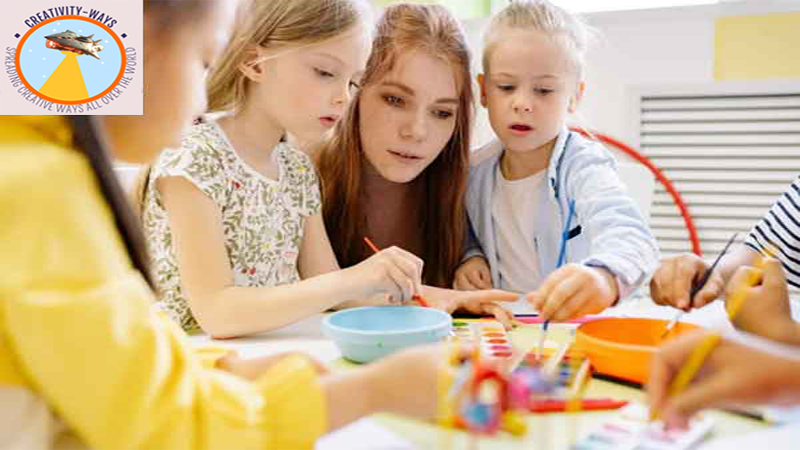The Art of Raising Creative Children
The Art of Raising Creative Children
Introduction to Creativity in Child Development
Creativity plays a crucial role in a child’s overall development, fostering problem-solving skills, critical thinking, and emotional intelligence. Raising a creative child requires a supportive environment that nurtures curiosity and encourages innovative thinking. “The Art of Raising Creative Children” is a comprehensive guide designed to help parents understand the best methods for fostering creativity from an early age through adolescence.
The Importance of a Stimulating Environment
A child’s surroundings significantly impact their creative growth. A home that encourages exploration, experimentation, and self-expression helps children develop their creative potential. Parents can cultivate a stimulating environment by:
- Providing access to art supplies, books, and puzzles.
- Encouraging outdoor activities and nature exploration.
- Promoting open-ended discussions that allow children to express their thoughts freely.
The Role of Play in Fostering Creativity
Play is an essential component of creative development. Through imaginative play, children learn to think outside the box and develop problem-solving skills. Parents should consider:
- Incorporating role-playing activities.
- Using building blocks and construction sets to enhance spatial skills.
- Introducing storytelling games that encourage creative thinking.

Enhancing Communication and Language Skills
Effective communication and a rich vocabulary empower children to express their ideas clearly. To improve these skills, parents should:
- Read books with their children daily.
- Encourage journaling and creative writing exercises.
- Engage in thoughtful conversations about various topics.
Encouraging Artistic and Musical Exploration
Exposure to arts and music fosters creativity by stimulating different parts of the brain. Parents can support their child’s artistic side by:
- Enrolling them in art classes or music lessons.
- Allowing freehand drawing and painting sessions.
- Introducing different musical instruments and encouraging experimentation.
Developing Problem-Solving and Critical Thinking Abilities
Creativity is closely linked to problem-solving. Parents can strengthen this skill by:
- Providing puzzles and brain-teasers.
- Encouraging independent thinking in decision-making.
- Presenting real-life challenges for children to resolve creatively.
The Influence of Parental Support and Encouragement
A child’s confidence in their creative abilities is often shaped by parental feedback. To nurture creativity effectively, parents should:
- Praise effort rather than results.
- Allow children to make mistakes and learn from them.
- Support unconventional ideas and solutions.
Teaching Resilience and Overcoming Failure
Failure is a natural part of the creative process. Teaching children resilience will help them persist in the face of challenges. Strategies include:
- Framing mistakes as learning opportunities.
- Encouraging perseverance and adaptability.
- Sharing stories of successful individuals who overcame obstacles.
Fostering Curiosity and Exploration
Curiosity fuels creativity. To nurture a child’s inquisitive nature, parents can:
- Answer their questions patiently and encourage further research.
- Provide hands-on experiences such as science experiments.
- Visit museums, libraries, and cultural events together.
Utilizing Technology as a Creative Tool
When used wisely, technology can enhance creative development. Parents can guide their children to use technology effectively by:
- Introducing educational apps that promote design, coding, and storytelling.
- Encouraging video or photography projects.
- Limiting passive screen time in favor of interactive content.
The Connection Between Physical Activity and Creativity
Physical activity is linked to cognitive function and creative thinking. To balance creativity with movement, parents should:
- Encourage outdoor play and physical exercises.
- Introduce activities like dance, gymnastics, or martial arts.
- Incorporate mindfulness practices like yoga to improve focus.
The Power of Positive Role Models
Children often emulate the behavior of those around them. Parents can inspire creativity by:
- Demonstrating creative habits themselves.
- Exposing children to influential innovators, artists, and scientists.
- Engaging in shared creative projects, such as DIY crafts or cooking.
Promoting Social Interaction and Emotional Intelligence
Creativity flourishes in collaborative settings. Parents should encourage social skills by:
- Organizing group activities that require teamwork and creativity.
- Teaching empathy and emotional awareness through discussions and storytelling.
- Supporting participation in clubs or organizations that foster creative expression.
The Importance of Proper Sleep and Nutrition
A well-rested and well-nourished child is more likely to engage in creative activities. Parents should ensure:
- Consistent sleep schedules for optimal brain function.
- A balanced diet rich in nutrients that support cognitive health.
- Hydration to maintain focus and mental clarity.
Encouragement and Long-Term Support
Consistent encouragement is crucial for long-term creative development. Parents should:
- Celebrate small creative achievements.
- Provide opportunities for continuous learning and growth.
- Foster an environment where creativity is valued and appreciated.
Conclusion
Raising a creative child involves more than just providing resources; it requires active encouragement, patience, and an openness to exploration. By implementing these strategies, parents can help their children develop into innovative thinkers who approach the world with curiosity and confidence. “The Art of Raising Creative Children” serves as a valuable resource for families seeking to unlock their child’s full potential in a world that values creativity and ingenuity.













